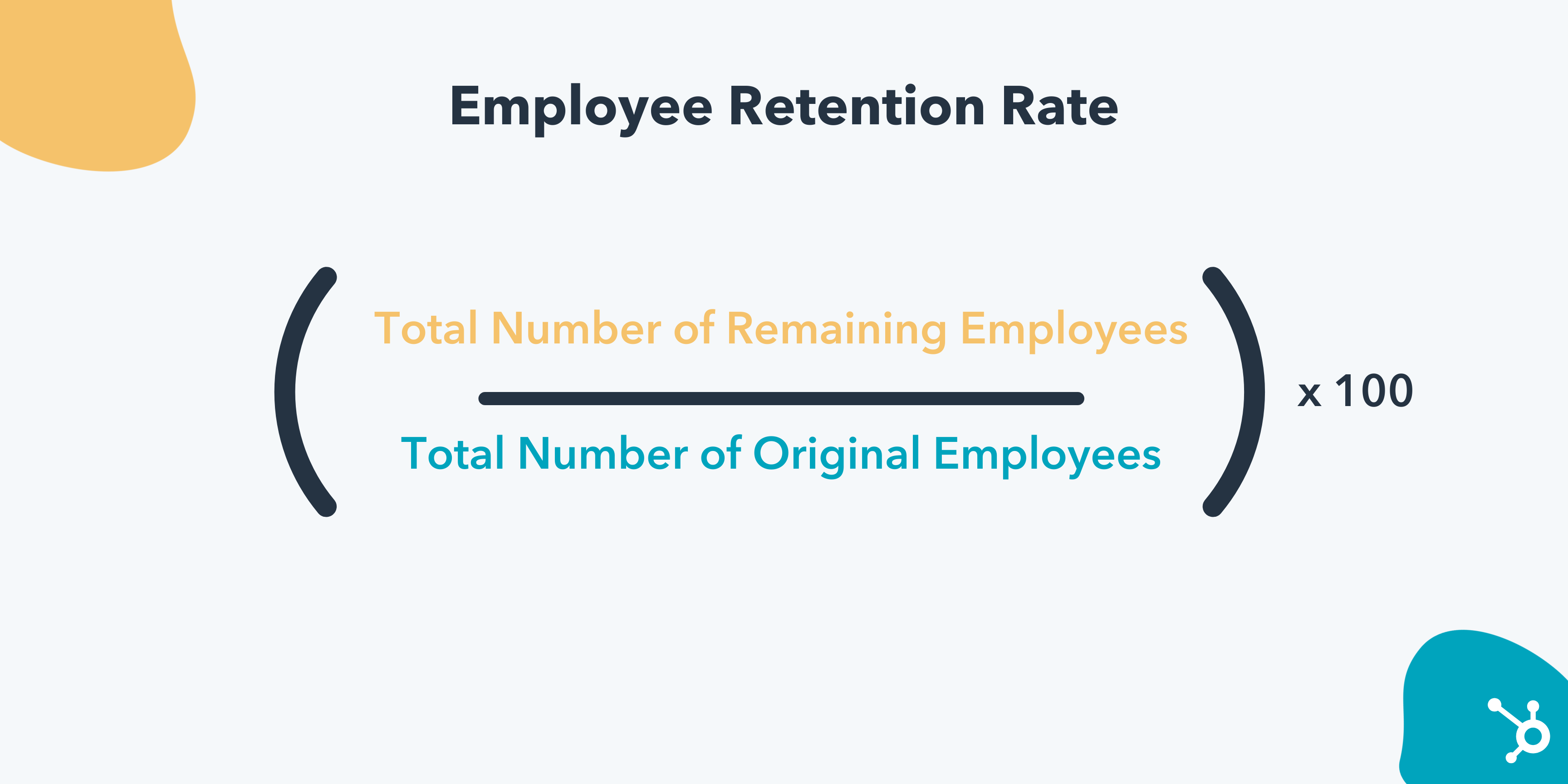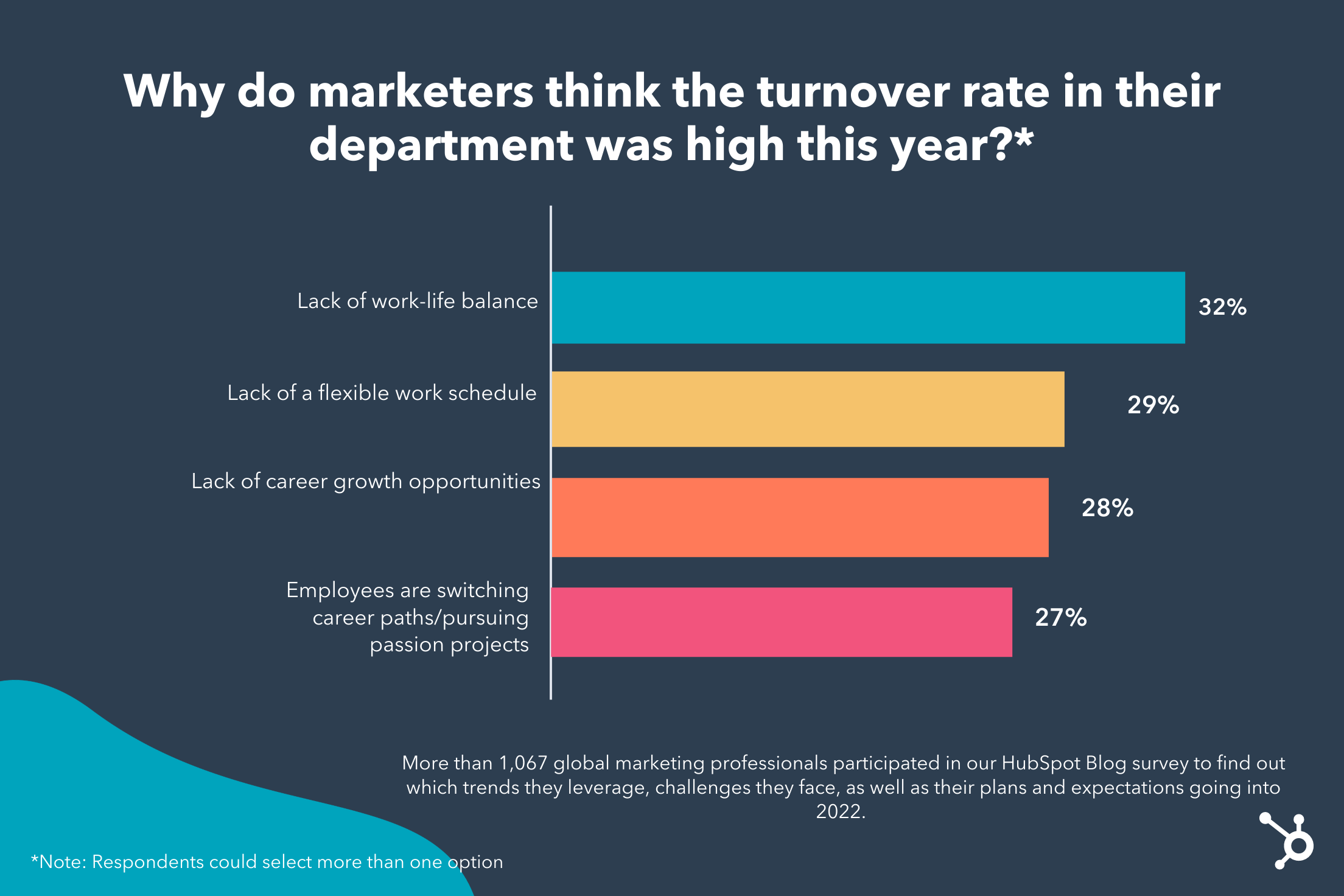Sometimes employees stay at a company for many years, loving the work they do and feeling like they’re exactly where they’re meant to be. Conversely, some employees leave and pursue other opportunities.
Whatever the case is for your business, you likely want to retain all of your employees, whether they’ve been with you for ten years or just started last quarter.
In this post, learn what employee retention is and discover high-impact strategies that will help you satisfy your employees and keep a low retention rate.
What is employee retention?
Employee retention is a business’s ability to keep their employees and reduce employee turnover, which is when employees leave their jobs for other opportunities or reasons.
Increasing employee retention directly impacts business success, as having more employees or the right amount of employees makes it easier to reach business goals.
Employee retention is expressed as a percentage, and below we’ll discuss how it’s measured.
How to Calculate Employee Retention Rate
The formula to calculate your employee retention rate is rather straightforward. You simply divide your total number of remaining employees during a set period by the total number of employees you began with during that same period and multiply the number by 100.

For example, let’s say you began Q1 with 43 employees and finished Q1 with 39 employees. Your equation would look like this:
(39 / 43) x 100
And your employee retention rate would be 90.69%, or 90.7% rounded to the nearest 10th.
Why is employee retention rate important?
Employee retention rate is important because it helps you understand how your business fares in keeping employees and whether or not there need to be improvements to your employee retention strategies.
If your rate tells you that you have lower retention, your business likely spends more money hiring new employees than helping existing employees succeed. In fact, according to Gallup, the cost of replacing employees can range from .5 to 2x times an employee’s annual salary.
How to Improve Employee Retention
Recent HubSpot Data found that marketers reported that they believed that the reasons for high employee turnover were a lack of work-life balance, lack of flexible schedule, or lack of career growth opportunities.
Improving employee retention means reducing employee turnover and continuing to meet overall business goals that contribute to success. It usually begins with hiring the right employee and additional strategies we’ll discuss below.
Employee Retention Strategies
1. Use comprehensive hiring practices.
As mentioned above, employee retention often begins by simply hiring the right people. And, the best way to hire the right people is to have a recruitment process that ensures you’re hiring the right people.
It’s best not to subject candidates to a long and drawn-out process as it may send them elsewhere. More so, going through interviewing in a way that helps you best understand the candidate and if they possess the right skills for the role or will be able to develop them on the job.
2. Strive to create supportive work environments.
Employees need to work in environments where they feel supported; a key to retaining employees. Therefore, strive to create an environment where employees flourish and perform to their best abilities.
Some of the best ways to do so are by providing adequate on-the-job training, practicing effective and clear communication, and offering benefits and perks.
3. Provide proper training and development.
Training and development are crucial to employee retention.
If employees aren’t adequately trained for their jobs, they may feel underprepared for their work or as if they aren’t performing well. If employees feel like they can’t do their job, they may pursue opportunities that offer comprehensive onboarding and on-the-job training.
4. Always communicate.
Communication is a pillar of employee retention. When people understand what is expected of them and there are open lines of communication, they’re more likely to feel prepared for their jobs and ask questions if they are confused.
For example, if you’re a people manager, saying “You need to improve next quarter” is less effective than saying, “Next quarter I’d like to see improvement in XYZ areas, and some ways to ensure you’re meeting targets in those areas is to do XYZ.”
Communication is also critical for higher-level executives, as employees want to hear from business leaders about how the business is faring and how their job duties relate to overall success.
5. Offer benefits and perks.
Benefits and perks are a significant part of employee retention. Offering them shows employees that you genuinely care about their wellbeing, and it can give them a sense of security about their lives. For example, benefits like health insurance ensure employees can find adequate care if they get sick.
Added perks can be fitness discounts, access to corporate deals, or maybe even providing coffee in the workplace. If you’re hoping to include perks directly related to employee desires, ask employees for feedback about what they're interested in having offered.
6. Create career development plans.
Working with employees to create a path for development at work is a great way to encourage retention. It gives people a goal to work towards and can be a significant motivating factor.
Quarterly, bi-annual, or annual career chats where managers sit down with employees and discuss where they want to be, how they can get there, and what opportunities are open to them is a great way to practice this.
7. Provide effective manager training.
Employees sometimes leave their jobs because they don’t feel supported by their managers. To combat this, ensure that your business invests in effective training for managers so they can effectively support employees and their development.
Effective training also ensures managers are equipped to have tough conversations with employees when necessary, like letting them know that they need to further develop specific skills or make changes to their job processes.
All in all, people want to feel that their managers care about them, and proper training can ensure that this happens.
8. Create internal recognition programs.
A great way for employees to feel seen and appreciated at work is to have internal award programs, where employees are recognized for their hard work. You’ll show employees that you value what they do for your business, and all of their coworkers can be aware of their impact.
In practice, this can look like a peer recognition program where coworkers nominate other team members or a manager nominated award.
9. Support employees in educational endeavors.
One reason employees leave companies is to go back to school and continue their education.
Instead of losing employees, you can consider supporting their educational development while they remain on the job. For example, some companies pay for or reimburse employees for academic courses they complete while still working for the company.
10. Encourage skill development.
You want employees to receive the training they need to succeed at their jobs. Still, you should also encourage employees to develop additional skills that will aid in their professional development. By doing so, employees can progress into new roles within your organization instead of seeking opportunities elsewhere.
For example, say an employee is stuck in a rut where they feel like they already know how to do their job but are desiring to do something more. If there are no opportunities at their current workplace to learn new skills, they may seek an opportunity at another company that will allow them to learn new skills.
Instead, if that employee can develop additional skills while remaining on the job, they may be more likely to stay. For example, employees can propose new projects within their team that will place them outside of their comfort zone and require new skills, or take on a workplace opportunity that requires new skills, like organizing a speaker series and learning about recruiting talent.
11. Show employees how their work affects customers.
A great way to help employees see that their job means something is to ensure they know how their work affects customers. This could look like highlighting customer success stories or case studies where employees can truly see the fruits of their efforts and how a customer has succeeded because of the work they’ve done.
Conversely, when employees don’t feel like their work means something, or they don’t understand how they can help the customer, they may be more likely to pursue an opportunity where they clearly see how they make an impact.
12. Offer fair compensation.
A significant reason employees leave is that they feel they aren’t adequately compensated for their work. Case in point — LinkedIn’s Global Talent Trends Report from 2020 found that companies rated highly in providing fair compensation had a 56% lower rate of attrition.
Therefore, a best practice for increasing employee retention is to ensure that you’re fairly compensating employees, starting with baseline salary. You can also consider offering raises, promotions, or taking on new responsibilities.
13. Always provide actionable feedback.
Employees want to understand their performance, so providing feedback is critical. They’ll know areas of high performance, as well as specific skills that need improvement.
Having this feedback shows employees that you care about their performance and how it affects the company. When feedback is actionable, you show that you care about their development and aren’t just instructing them to do better with no additional advice.
Employees that aren’t given feedback are left confused about their performance and unsure if they need to make changes, lacking guidance, and may go somewhere else where they understand more about how they’re fairing.
14. Encourage a proper work-life balance.
Employees who feel they’re expected to be in work mode 24/7 will be stressed and likely develop feelings of burnout. They may also decide to pursue work elsewhere, where they know that it is encouraged to live a life outside of work.
Instead, encourage people to have a work-life balance and set boundaries. For example, maybe you say that people should set time frames in which they will be doing work, and then times where they will put everything aside and pick it up tomorrow.
Promoting this balance can also look like encouraging employees to take time off when necessary or even taking breaks during the workday.
15. Practice effective change management.
All workplaces have to deal with change, and sometimes that change can be unexpected.
The COVID-19 pandemic is an excellent example of practicing effective change management. Millions of people worldwide were suddenly expected to pivot to different working styles, and change management was necessary to prepare workers for these changes and create a smooth transition.
Being able to reassure employees when changes are happening, both big and small, can help assuage any fears and anxieties they may have about doing their jobs. Without this, employees may feel they are being left behind and seek opportunities elsewhere.
16. Always emphasize teamwork.
Rarely do people work in silos, so you should always encourage employees to work together as a team so people feel as though they aren’t working independently to help solve company needs.
Encourage employees to get to know their coworkers, contribute in group settings, and collaborate when necessary. You can also encourage employees to turn to each other for advice and assistance before reaching out to a manager.
17. Offer flexible work options.
LinkedIn’s Global Talent Report names four P’s of employee experience: people, place, product, and process. Place, concerning employee retention, means where people work, whether physically in the office, are remote, or a combination of the two.
This means that a critical aspect of employee retention is offering employees to choose a preferred mode of work, whether that be entirely in-person at an office, a hybrid option between working at home and going into the office, or completely remote.
By doing this, employees can pick a mode of work that speaks best to their needs. For example, some people are caregivers to family and friends, so having the opportunity to work from home and continue to provide care can be the difference between retaining them or losing them to a company with more flexibility.
18. Create an inclusive work environment.
An inclusive workspace is critical to retention, as employees who feel safe and valued in the workplace are more likely to stay within your company.
This means that it’s important to champion diversity, inclusion, and belonging at work so that all individual employees feel recognized, seen, and cared for by your business. You can do things like:
- Create diversity programming,
- Create employee resource groups so employees can connect with others in the workplace that share similar identities,
- Create an inclusive language guide for your business to refer to to ensure that writing is inclusive of everyone.
Companies that don’t practice diversity see its effects in their retention — for example, nearly 50% of people of color have quit a job because of experiencing or witnessing discrimination at work.
Retaining your employees often begins by hiring the right person. But even then, it’s essential to continuously work to make employees feel safe, comfortable, and able to succeed at their jobs.
If you’ve calculated your business’s business retention rate and found that you want to raise it, leverage the tips on this list to begin lowering your turnover rate.
18 Strategies to Increase Employee Retention was originally posted by Local Sign Company Irvine, Ca. https://goo.gl/4NmUQV https://goo.gl/bQ1zHR http://www.pearltrees.com/anaheimsigns



No comments:
Post a Comment